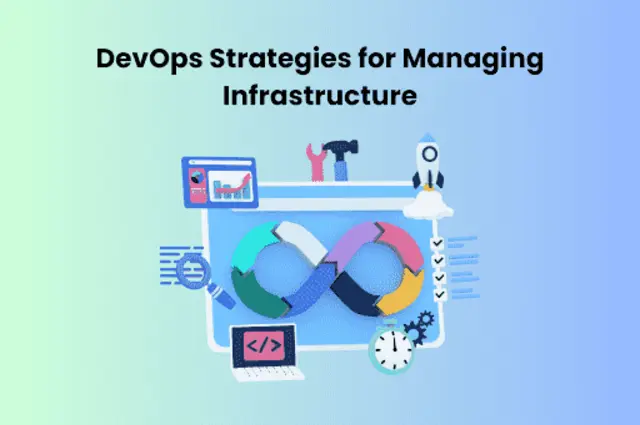In modern software development and IT operations, DevOps has emerged as a transformative approach that emphasizes collaboration, automation, and integration between development and operations teams. While DevOps is often associated with application development, its principles and practices are equally relevant to managing infrastructure. In this blog, we will explore how organizations can leverage DevOps strategies to streamline infrastructure management, improve operational efficiency, and achieve greater agility in their IT operations. We will also discuss the role of DevOps Course in equipping teams with the skills and knowledge needed to implement DevOps practices effectively.
The Role of DevOps in Infrastructure Management
DevOps is a cultural and technical movement emphasizing software development and IT operations teams collaborating, automating, and integrating their processes. It seeks to eliminate silos between these formerly distinct functions, thereby enabling businesses to deliver software of superior quality more quickly and dependably. By applying software development principles to the administration of infrastructure and regarding it as code, DevOps practices can assist organizations in attaining enhanced agility, scalability, and resilience within infrastructure management.
Infrastructure as Code (IaC)
Infrastructure as Code (IaC), which manages and provision infrastructure via machine-readable definition files as opposed to manual processes or tangible hardware configurations, is one of the guiding principles of DevOps. Organizations can automate the provisioning and configuration of resources, ensure consistency, enforce standards, and scale infrastructure as required by defining infrastructure in code. Additionally, this methodology facilitates version control, which empowers groups to monitor modifications, enhance collaboration, and revert to prior states when necessary.
Continuous Integration and Continuous Deployment (CI/CD)
Continuous Integration and Continuous Deployment (CI/CD), which automates the build, testing, and deployment processes to provide software updates with greater frequency and dependability, is an additional crucial element of DevOps. CI/CD pipelines can be utilized to automate the deployment of infrastructure changes, such as provisioning new resources or modifications to server configurations, within the context of infrastructure management. By accelerating the delivery of infrastructure changes, this automation mitigates the potential for human error and empowers organizations to respond more promptly to evolving business requirements.
Monitoring and Feedback Loops
Continuous monitoring and feedback are essential components of effective infrastructure management to guarantee systems and applications’ availability, security, and performance. DevOps advocates implementing monitoring tools and practices that gather and analyze data from applications and infrastructure. This empowers teams to proactively detect problems, optimize performance, and make well-informed decisions regarding changes to the infrastructure. Businesses can consistently enhance their infrastructure and generate increased value by establishing feedback channels among operations, development, and other stakeholders.
Implementing DevOps Strategies in Practice
While understanding the principles of DevOps is essential, implementing these strategies in practice requires careful planning and execution. Organizations should focus on fostering a culture of collaboration and continuous improvement, where teams are empowered to experiment, learn from failures, and iterate quickly. Additionally, investing in the right tools and technologies, such as automation frameworks, monitoring solutions, and cloud platforms, can help streamline infrastructure management and enable teams to work more efficiently. By embracing DevOps not just as a set of practices but as a cultural mindset, organizations can unlock new levels of agility and innovation in managing their infrastructure.
Conclusion
DevOps presents robust infrastructure management strategies that can assist businesses in attaining enhanced agility, scalability, and dependability in the ever-changing contemporary business landscape. By adopting DevOps principles, including monitoring and feedback loops, Continuous Integration and Continuous Deployment, and Infrastructure as Code, organizations can optimize their infrastructure management procedures, enhance operational effectiveness, and provide superior results for their clientele. With the increasing adoption of digital transformation by businesses, the significance of DevOps in infrastructure management will grow substantially. Consequently, IT professionals must enroll in a comprehensive DevOps course to remain informed about the most recent DevOps practices.
Stay on top of the latest in tech with Blink Techno – your go-to source for everything tech-related!



 The Role of Custom Web Application Development in Digital Transformation
The Role of Custom Web Application Development in Digital Transformation  Elevate Your Project: Outsource Ruby on Rails Development
Elevate Your Project: Outsource Ruby on Rails Development